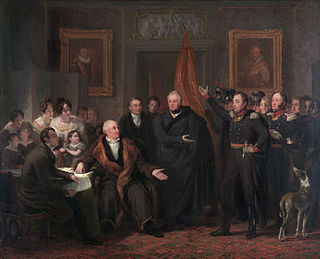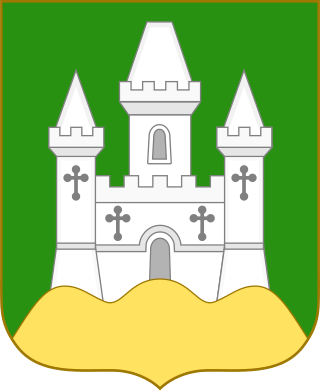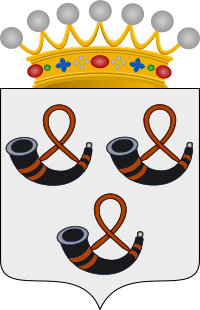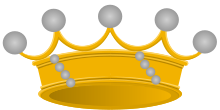
Peerages in the United Kingdom form a legal system comprising both hereditary and lifetime titles, composed of various ranks, and within the framework of the Constitution of the United Kingdom form a constituent part of the legislative process and the British honours system. The British monarch is considered the fount of honour and is notionally the only person who can grant peerages, though there are many conventions about how this power is used, especially at the request of the British government. The term peerage can be used both collectively to refer to the entire body of titled nobility, and individually to refer to a specific title. British peerage title holders are termed peers of the Realm.

Duke is a male title either of a monarch ruling over a duchy, or of a member of royalty, or nobility. As rulers, dukes are ranked below emperors, kings, grand princes, grand dukes, and sovereign princes. As royalty or nobility, they are ranked below princes and grand dukes. The title comes from French duc, itself from the Latin dux, 'leader', a term used in republican Rome to refer to a military commander without an official rank, and later coming to mean the leading military commander of a province. In most countries, the word duchess is the female equivalent.

A viscount or viscountess is a title used in certain European countries for a noble of varying status. The status and any domain held by a viscount is a viscountcy.

Baron is a rank of nobility or title of honour, often hereditary, in various European countries, either current or historical. The female equivalent is baroness. Typically, the title denotes an aristocrat who ranks higher than a lord or knight, but lower than a viscount or count. Often, barons hold their fief – their lands and income – directly from the monarch. Barons are less often the vassals of other nobles. In many kingdoms, they were entitled to wear a smaller form of a crown called a coronet.

The Swedish nobility has historically been a legally and/or socially privileged class in Sweden, and part of the so-called frälse. The archaic term for nobility, frälse, also included the clergy, a classification defined by tax exemptions and representation in the diet. Today the nobility does not maintain its former legal privileges although family names, titles and coats of arms are still protected. The Swedish nobility consists of both "introduced" and "unintroduced" nobility, where the latter has not been formally "introduced" at the House of Nobility (Riddarhuset). The House of Nobility still maintains a fee for male members over the age of 18 for upkeep on pertinent buildings in Stockholm.

The Spanish nobility are people who possess a title of nobility confirmed by the Spanish Ministry of the Presidency, Justice and Relations with the Cortes, as well as those individuals appointed to one of Spain's three highest orders of knighthood, the Order of the Golden Fleece, Order of Charles III and Order of Isabella the Catholic. Some member of the Spanish nobility possess various titles that may be inherited or not, but the creation and recognition of titles is legally the prerogative of the monarchy of Spain.

In British heraldry, a coronet is any crown whose bearer is less than sovereign or royal in rank, irrespective of the crown's appearance. In other languages, this distinction is not made, and usually the same word for crown is used irrespective of rank In this use, the English coronet is a purely technical term for all heraldic images of crowns not used by a sovereign, and implies nothing about the actual shape of the crown depicted. A Coronet is another type of crown, but is reserved for the lower ranks of nobility like Marquesses and Marchionesses, Earls and Countesses, Barons and Baronesses, and some Lords and Ladies. The specific design and attributes of the crown or coronet signifies the hierarchy and ranking of its owner.
Traditional rank amongst European imperiality, royalty, peers, and nobility is rooted in Late Antiquity and the Middle Ages. Although they vary over time and among geographic regions, the following is a reasonably comprehensive list that provides information on both general ranks and specific differences. Distinction should be made between reigning families and the nobility – the latter being a social class subject to and created by the former.
False titles of nobility or royal title scams are claimed titles of social rank that have been fabricated or assumed by an individual or family without recognition by the authorities of a country in which titles of nobility exist or once existed. They have received an increasing amount of press attention, as more schemes that purport to confer or sell such honorifics are promoted on the internet. Concern about the use of titles which lack legal standing or a basis in tradition has prompted increased vigilance and denunciation, although under English common law a person may choose to be known by any name they see fit as long as it is not done to "commit fraud or evade an obligation".

The Dutch nobility is a small elite social class consisting of individuals or families recognized as noble, and with or without a title of nobility in the Kingdom of the Netherlands.
Jonkheer is an honorific in the Low Countries denoting the lowest rank within the nobility. In the Netherlands, this in general concerns a prefix used by the untitled nobility. In Belgium, this is the lowest title within the nobility system, recognised by the Court of Cassation. It is the cognate and equivalent of the German noble honorific Junker, which was historically used throughout the German-speaking part of Europe, and to some extent also within Scandinavia.
The German nobility and royalty were status groups of the medieval society in Central Europe, which enjoyed certain privileges relative to other people under the laws and customs in the German-speaking area, until the beginning of the 20th century. Historically, German entities that recognized or conferred nobility included the Holy Roman Empire (962–1806), the German Confederation (1814–1866) and the German Empire (1871–1918). Chancellor Otto von Bismarck in the German Empire had a policy of expanding his political base by ennobling nouveau riche industrialists and businessmen who had no noble ancestors. The nobility flourished during the dramatic industrialization and urbanization of Germany after 1850. Landowners modernized their estates, and oriented their business to an international market. Many younger sons were positioned in the rapidly growing national and regional civil service bureaucracies, as well as in the officer corps of the military. They acquired not only the technical skills but the necessary education in high prestige German universities that facilitated their success. Many became political leaders of new reform organizations such as agrarian leagues, and pressure groups. The Roman Catholic nobility played a major role in forming the new Centre Party in resistance to Bismarck's anti-Catholic Kulturkampf, while Protestant nobles were similarly active in the Conservative Party.
The British nobility is made up of the peerage and the (landed) gentry. The nobility of its four constituent home nations has played a major role in shaping the history of the country, although the hereditary peerage now retain only the rights to stand for election to the House of Lords, dining rights there, position in the formal order of precedence, the right to certain titles, and the right to an audience with the monarch.

A heerlijkheid was a landed estate that served as the lowest administrative and judicial unit in rural areas in the Dutch-speaking Low Countries before 1800. It originated as a unit of lordship under the feudal system during the Middle Ages. The English equivalents are manor, seigniory and lordship. The German equivalent is Herrschaft. The heerlijkheid system was the Dutch version of manorialism that prevailed in the Low Countries and was the precursor to the modern municipality system in the Netherlands and Flemish Belgium.

Van Hogendorp is a patrician family that belongs to the Dutch nobility.

Marquess of Heusden is a high-ranking Dutch title of nobility retained by the Earl of Clancarty.

The House of Amsberg is a German noble family that originated in Mecklenburg and whose agnatic head is the present King of the Netherlands, Willem-Alexander. A great-grandson of a blacksmith and grandson of a baker, parish pastor August Amsberg (1747–1820) started calling himself "von Amsberg" in 1795, and the family's right to use this name was confirmed in 1891 by Frederick Francis III, Grand Duke of Mecklenburg-Schwerin. By this permission to use a nobiliary particle, the family effectively became part of the untitled lower nobility of the Grand Duchy of Mecklenburg-Schwerin.
Duke, in the United Kingdom, is the highest-ranking hereditary title in all five peerages of the British Isles. A duke thus outranks all other holders of titles of nobility.

The Van Watervliet family is a Dutch noble family of businessmen and landowners who rose to prominence during the early Renaissance in the County of Zeeland of the Seventeen Provinces of the Holy Roman Empire, and later in the Netherlands and British colonies of North America.














